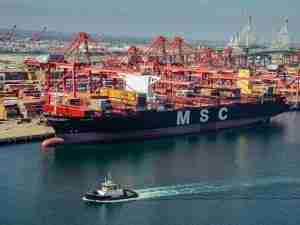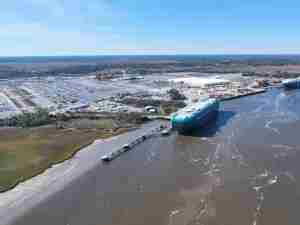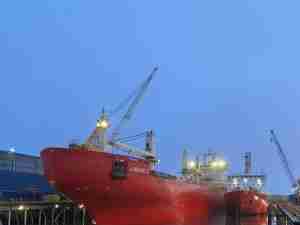Titled "US Container Ports and Air Pollution: a Perfect Storm," the report on the study presents findings of a 10-month effort in 2007 that assessed air pollution control efforts at America's top 10 container ports. Study author and Energy Futures President James Cannon made on-site research visits to each of the ports, which together handle about 80% of all US imports. Ports included in the study were: Los Angeles, CA; Long Beach, CA; New York and neighboring New Jersey; Oakland, CA; Savannah, GA; Tacoma, WA; Hampton Roads, VA; Seattle, WA; Charleston, SC; and Houston, TX.
Ports pose grave health risks to millions of people living in metropolitan coastal areas, especially those living nearest the ports. "The combination of growing US port activity, the densely populated regions where most ports are located, and the prevailing onshore wind patterns that accumulate rather than disperse port air pollution create a 'perfect storm' of threats to public health," Cannon said.
Cannon explained, "We've concluded that the best way to lower air pollution and greenhouse gas emissions and diversify fuel supply at US container ports is to use alternative fuels or advanced technologies to replace diesel." The study found that natural gas is currently the leading alternative fuel for goods movement.
Each step of the goods movement process today - from delivery of goods to ports and from there by truck or rail to US consumers - is powered by diesel fuel. Burning diesel fuel releases health-threatening toxic air contaminants, smog-forming air pollution and climate-changing greenhouse gases.
Container ports are one of the fastest growing business sectors in the US, according to Energy Futures. Oceangoing container cargo ships make more than 10,000 visits annually to American ports. Container shipments rose 80% in the last decade alone, with nearly 45 million twenty-foot equivalent units (teus) of containers unloaded or loaded at US marine ports in 2006.
Programs to counteract the pollution problem are progressing now at several of the ports under study, most notably in California, the report indicates.
Six projects are currently underway in the state to deploy fleets of natural gas-powered cargo handling vehicles. Efforts to replace diesel fuel with clean-burning liquefied natural gas (LNG) are in process at the three largest container ports in California --- Los Angeles, Long Beach and Oakland.
The Energy Futures report is a call to action at the national level to reduce air pollution at US container ports. Decision makers must develop policies designed to maintain port growth momentum, while preserving public health and environmental quality. "Port air pollution is bad and getting worse," warns Cannon. A patchwork of local programs, however innovative, cannot equitably finance cleanup efforts or solve this disturbing national problem.
Based on its "Perfect Storm" research findings, Energy Futures has developed policy recommendations as the national debate about how to combat growing air pollution at US ports intensifies. The report urges decision makers to:
- Promote the use of alternative fuels and advanced technologies to reduce air pollution and greenhouse gases
- Develop and Implement a national port clean-up strategy at the federal government level
- Create a national funding mechanism to finance comprehensive port clean-up
- Advocate global environmental standards in the international arena, and
- Create a global clearinghouse of information about port clean-up efforts.











